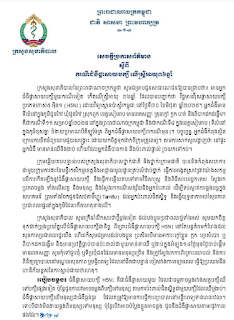#18,778
Like the creation of a truly universal flu vaccine, the quest for an avian flu-resistant chicken (and other poultry species) is one of the holy grails of influenza virology.
Nearly 13 years ago, in CSIRO: The Quest For Flu Resistant Poultry, I featured a 2005 Livestock Research Magazine cover (above), where Cambridge University virologist Laurence Tiley had stated, “The tools to make poultry resistant to flu infection already exist”.By 2012, additional work had been done on the creation of transgenic chickens; which would hopefully not only be resistant to H5N1, but could pass that resistance onto their chicks (see Silencing the bird flu gene: scientists prep live hen trials in The Conversation).His bigger concern was whether they could persuade the public of the benefits of Genetically Modified (GM) poultry, which remains a touchy subject.
But just as predictions of a commercially available universal flu vaccine being just 5 years away have thus far proved optimistic, the road to flu-resistant poultry has hit repeated roadblocks.
Progress continues to be made, however, on both fronts (see 2023's NIH: Clinical Trial of Universal Hexavalent Flu Vaccine Candidate Begins), and today we have a lengthy - and at times highly technical - review of recent strides in developing flu resilient and/or resistant chickens.
While we appear to be getting closer to those goals, there are still a lot of obstacles to overcome. And assuming resistant poultry can eventually be produced, there is still the matter of acceptance by the public.
Those looking for a deep-dive will want to follow the link and read the review in its entirety (warning: pack a lunch). I'll have a brief postscript after the break.
Genetic resilience or resistance in poultry against avian influenza virus: mirage or reality?
Authors: Paula R. Chen, Stephen N. White, Lianna R. Walker , Darrell R. Kapczynski , David L. Suarez david.suarez@usda.govAuthors Info & Affiliations
https://doi.org/10.1128/jvi.00820-25
ABSTRACT
The unprecedented global spread of the highly pathogenic avian influenza (HPAI) virus in wild birds, poultry, and mammalian species has challenged our control efforts. Alternative approaches to limit avian influenza viruses (AIV) include the development of resilient or resistant chickens. Genetically resilient birds may become infected but can overcome disease, whereas resistant birds prevent virus attachment or entry and do not become infected.
The most intensively studied host gene is myxovirus-resistance (Mx), which is expressed via the interferon pathway. Both sensitive and resistant chicken Mx genotypes have been described, but this only provides limited resilience. Acidic nuclear phosphoprotein 32 family member A (ANP32A) has been demonstrated as a host cofactor for AIV replication via interaction with the polymerase. Small nucleotide changes within this gene have demonstrated some promise for the establishment of disease resilience. Certain MHC-defined genetic chicken lines have demonstrated increased resilience with higher innate immune responses, but HPAI-infected birds still have high morbidity and mortality.
Alternatively, gene-edited or -transgenic chickens have had some success in increasing resilience. This strategy allows flexibility to include foreign genes, modification of existing genes, or combined approaches to block critical steps in the viral life cycle. Some candidate genes include solute carrier 35A1 (SLC35A1), retinoic acid-inducible gene I (RIG-I), and toll-like receptors 3 and 7 (TLR3/7), but animal testing needs to be conducted.
Furthermore, existing hurdles for technology transfer to commercial application from either naturally occurring resistance genes or foreign genes remain high and will require acceptance by both the poultry industry and consumers.
(SNIP)
CONCLUSIONS
Many groups using multiple different approaches have tried to identify genetically resistant poultry with no success. Several genes have been identified that may increase genetic resilience, but because of the high virulence and genetic variability of HPAI viruses, no genes on their own are likely to provide enduring resilience to disease.
However, other genes involved in AIV infection in chickens are likely to be identified and validated. An even greater obstacle is to introduce these genetic changes into commercial lines, where genetic trade-offs for disease resistance will need to be weighed against many other production traits.
Future work will clarify these tradeoffs in the form of the potential correlated responses to selection for naturally occurring, gene-edited, or transgenic alleles. We note that gene editing and/or transgenic approaches can be used alone, in combination with naturally occurring variants and breeding, or as the first discovery step to implement through similar natural genetic variants and selective breeding. If successful, any of these approaches would provide additional tools to combat AIV and be immensely valuable to the poultry industry.
Finding ways to make livestock innately flu resistant - without the need for repeated vaccinations or a steady diet of antivirals - is an incredibly important goal, and worthy of pursuit.
We've seen how quickly the overuse of antivirals can lead to resistance (see Nature's China's chicken farmers under fire for antiviral abuse), and vaccines must be continually updated if they are to be effective (see J. Virus Erad.: Ineffective Control Of LPAI H9N2 By Inactivated Poultry Vaccines - China).











